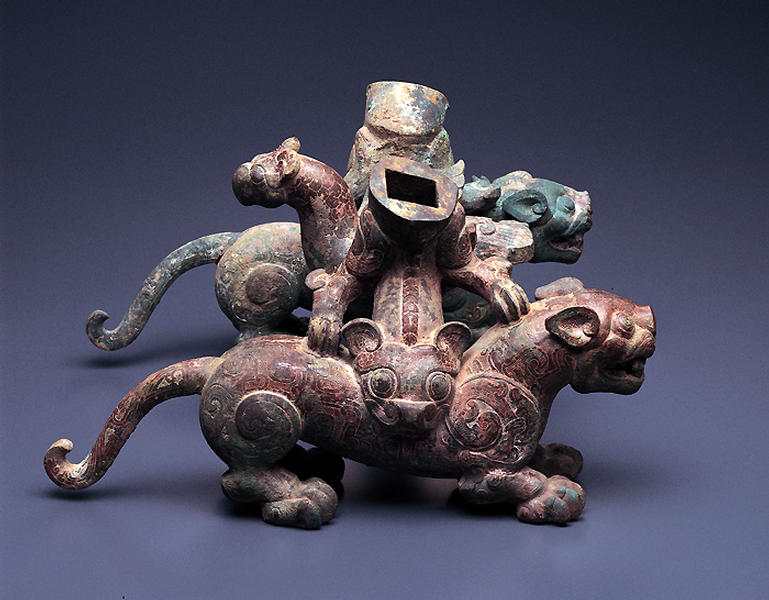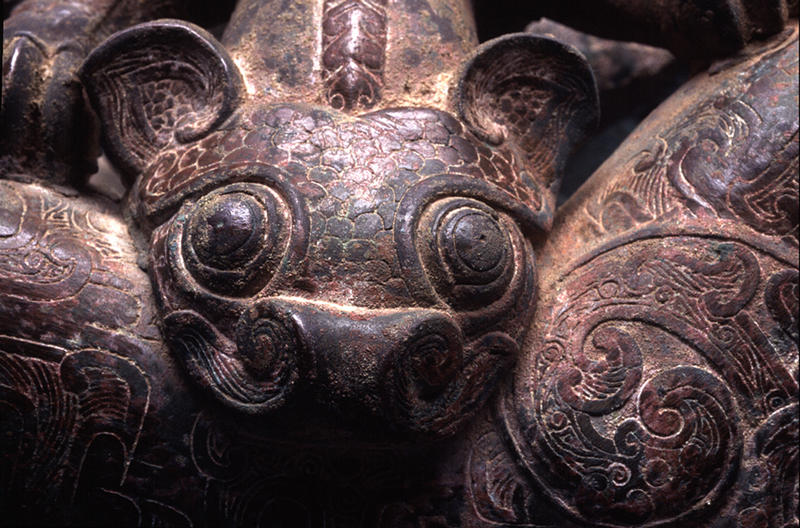鳳虎形台座
- 中国
- 中国・東周時代
- 前5世紀
- 青銅
- H-21.4 D-39 W-34.3
この台座は山西省侯馬で発掘された東周時代の青銅器工房の様式に極めて近いもので、一番下に二頭の虎が平行に臥せ、その各々の背中に鼻先が巻き上がったち龍が噛み付く形で組み合わされ、その龍の腹の間を鳳凰が翼をひろげ繋いでいる。ち龍の背骨の隆起した体躯は前肢の直後で切断され、矩形のほぞ穴を見せているが、おそらくS字状に立ちあがる半身がその上につながれ、何かを支える台として使われたものであろう。特に宗廟の祭祀に使う楽器の柱には虎、鳥(鳳凰)、龍の形象が使われたとされている。この獣が噛み付く体勢をはじめとする動物闘争意匠は、特に春秋の末から戦国にかけての青銅器などに顕著に見られる要素である。
Catalogue Entry
The stand is composed of a lower section of two tigers set parallel to each other, their legs bent. Each tiger is straddled by a curling-up nosed, chi dragon that bites it in the middle of the back, and between the dragons rises a phoenix, attached to the whole by its extended wings. Images of tigers, birds (the phoenix) and dragons often adorned supports for musical instruments used in ceremonies at ancestral burial sites. Designes such as that illustrated here, where animals are portrayed in fierce combat, are prominent on bronze implements produced from the end of the Spring and Autumn period through the Warring States period.

